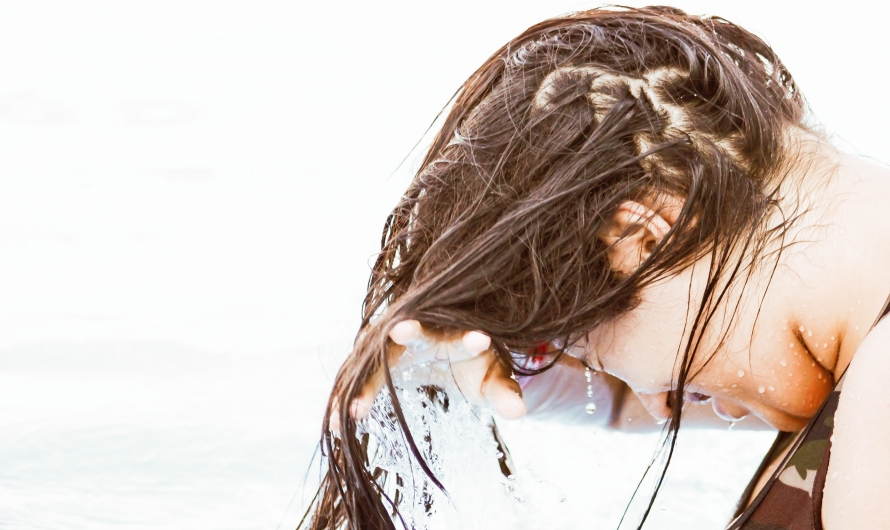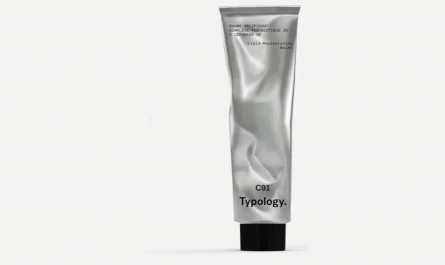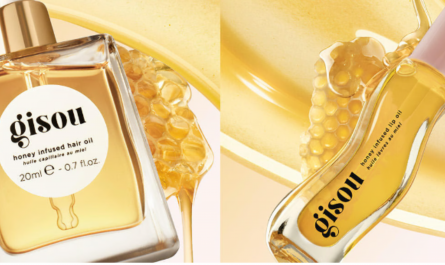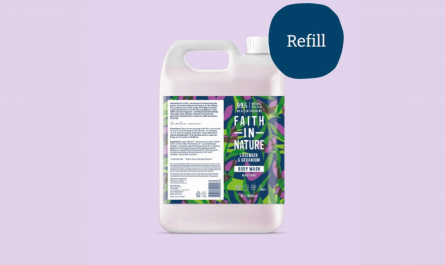Do you know how to wash your hair properly? Do you know how often you should wash your hair? If you answered no to either of these questions, don’t worry. You’re not alone. Many people struggle with finding the best way to wash their hair and keep it healthy and shiny.
Washing your hair is not as simple as it seems. There are many factors to consider, such as your hair type, your hair style, your shampoo and conditioner, and your lifestyle. Washing your hair too often or too little can cause problems like dryness, oiliness, frizz, breakage, and dandruff.
In this article, we’ll show you how to wash your hair properly and how often you should do it according to experts. We’ll also answer some of the most frequently asked questions about washing your hair. By the end of this article, you’ll have a better understanding of how to take care of your hair and make it look its best.
Why Washing Your Hair Is Important
Washing your hair is important for several reasons. First of all, washing your hair removes dirt, oil, sweat, and product buildup from your scalp and hair strands. This helps to keep your scalp healthy and prevent infections, inflammation, and itching. It also helps to keep your hair clean and fresh.
Secondly, washing your hair helps to moisturize and nourish your hair. When you wash your hair with shampoo and conditioner, you’re adding moisture and nutrients to your hair that can improve its texture, strength, elasticity, and shine. Moisturized and nourished hair is less prone to damage, split ends, and frizz.
Thirdly, washing your hair helps to enhance your appearance and confidence. When you wash your hair regularly, you’re showing that you care about yourself and your hygiene. You’re also making a good impression on others who see you. Clean and healthy hair can boost your self-esteem and make you feel more attractive.
The Benefits of Washing Your Hair
Some of the benefits of washing your hair are:
- It keeps your scalp clean and healthy
- It prevents infections, inflammation, and itching
- It removes dirt, oil, sweat, and product buildup
- It moisturizes and nourishes your hair
- It improves your hair texture, strength, elasticity, and shine
- It reduces damage, split ends, and frizz
- It enhances your appearance and confidence
The Drawbacks of Not Washing Your Hair
Some of the drawbacks of not washing your hair are:
- It makes your scalp dirty and unhealthy
- It increases the risk of infections, inflammation, and itching
- It accumulates dirt, oil, sweat, and product buildup
- It dries out and depletes your hair
- It worsens your hair texture, strength, elasticity, and shine
- It causes damage, split ends, and frizz
- It lowers your appearance and confidence
How to Choose the Right Shampoo and Conditioner for Your Hair Type and Style
One of the most important steps in washing your hair properly is choosing the right shampoo and conditioner for your hair type and style. Not all shampoos and conditioners are created equal. Some are designed for specific purposes or needs that may not suit yours.
For example, if you have dry or damaged hair,you need a shampoo and conditioner that can hydrate and repair your hair. If you have oily or fine hair, you need a shampoo and conditioner that can cleanse and volumize your hair. If you have curly or wavy hair, you need a shampoo and conditioner that can define and smooth your hair.
Choosing the wrong shampoo and conditioner can have negative effects on your hair. For example, if you use a shampoo and conditioner that are too harsh or too heavy for your hair, you can strip your hair of its natural oils or weigh it down. This can make your hair dry, brittle, flat, or greasy.
So how do you choose the right shampoo and conditioner for your hair type and style? Here are some tips to help you:
The Different Types of Shampoo and Conditioner
There are many types of shampoo and conditioner available in the market, each with different ingredients, formulas, and benefits. Some of the most common types are:
- Moisturizing shampoo and conditioner: These are ideal for dry or damaged hair, as they can replenish moisture and nutrients to your hair. They usually contain ingredients like glycerin, aloe vera, shea butter, coconut oil, or argan oil.
- Clarifying shampoo and conditioner: These are ideal for oily or fine hair, as they can remove excess oil and dirt from your scalp and hair. They usually contain ingredients like salicylic acid, tea tree oil, lemon juice, or vinegar.
- Volumizing shampoo and conditioner: These are ideal for fine or thinning hair, as they can add body and lift to your hair. They usually contain ingredients like protein, biotin, caffeine, or panthenol.
- Curl-enhancing shampoo and conditioner: These are ideal for curly or wavy hair, as they can define and enhance your natural curls. They usually contain ingredients like glycerin, honey, shea butter, or jojoba oil.
- Smoothing shampoo and conditioner: These are ideal for frizzy or unruly hair, as they can tame and smooth your hair cuticles. They usually contain ingredients like keratin, argan oil, coconut oil, or silk protein.
How to Identify Your Hair Type and Style
Before you choose a shampoo and conditioner for your hair, you need to identify your hair type and style. Your hair type refers to the natural characteristics of your hair, such as its texture, density, porosity, elasticity, and curl pattern. Your hair style refers to the way you cut, color, or style your hair.
To identify your hair type, you can use these methods:
- Texture: This refers to the thickness or diameter of your individual hair strands. You can measure this by comparing your hair strand to a piece of thread. If your hair strand is thinner than the thread, you have fine hair. If your hair strand is similar to the thread, you have medium hair. If your hair strand is thicker than the thread, you have coarse hair.
- Density: This refers to the amount of hair strands on your scalp. You can measure this by looking at how much scalp you can see when you part your hair. If you can see a lot of scalp, you have low-density hair. If you can see some scalp you have medium-density hair. If you can see little or no scalp, you have high-density hair.
- Porosity: This refers to how well your hair can absorb and retain moisture. You can measure this by doing a water test. Take a strand of clean, dry hair and drop it into a glass of water. If your hair sinks quickly, you have high-porosity hair. If your hair sinks slowly, you have medium-porosity hair. If your hair floats on the surface, you have low-porosity hair.
- Elasticity: This refers to how much your hair can stretch and bounce back without breaking. You can measure this by doing a stretch test. Take a strand of wet hair and gently pull it from both ends. If your hair stretches a lot and returns to its original shape, you have high-elasticity hair. If your hair stretches a little and returns to its original shape, you have medium-elasticity hair. If your hair breaks easily or doesn’t stretch at all, you have low-elasticity hair.
- Curl pattern: This refers to the shape and size of your natural curls or waves. You can identify this by looking at your hair when it’s dry and unstretched. If your hair is straight or has slight bends, you have type 1 hair. If your hair has loose waves or s-shaped curls, you have type 2 hair. If your hair has tight spirals or c-shaped curls, you have type 3 hair. If your hair has coils or z-shaped curls, you have type 4 hair.
To identify your hair style, you can use these factors:
- Length: This refers to how long your hair is from the roots to the ends. You can measure this by using a ruler or a tape measure. If your hair is shorter than 3 inches, you have short hair. If your hair is between 3 and 12 inches, you have medium hair. If your hair is longer than 12 inches, you have long hair.
- Color: This refers to the natural or artificial hue of your hair. You can identify this by looking at your hair in natural light or using a color chart. If your hair is black, brown, blonde, red, or gray, you have natural hair color. If your hair is dyed with any other color, such as pink, blue, purple, or green, you have artificial hair color.
- Style: This refers to the way you cut, curl, straighten, braid, or accessorize your hair. You can identify this by looking at your hair in the mirror or using a style guide. Some of the common styles are bob, pixie, bangs, layers, ponytail, bun, braid, twist, curl, wave, straighten, etc.
How to Match Your Shampoo and Conditioner to Your Hair Needs
Once you’ve identified your hair type and style, you can match your shampoo and conditioner to your specific needs. Here are some examples of how to do that:
- If you have dry or damaged hair, look for a moisturizing shampoo and conditioner that can hydrate and repair your hair. Avoid shampoos and conditioners that contain sulfates, alcohols, or salts, as they can dry out your hair further. Look for ingredients like glycerin, aloe vera, shea butter, coconut oil, or argan oil.
- If you have oily or fine hair, look for a clarifying shampoo and conditioner that can cleanse and volumize your hair. Avoid shampoos and conditioners that contain oils, silicones, or waxes, as they can weigh down your hair or make it greasy. Look for ingredients like salicylic acid, tea tree oil, lemon juice, or vinegar.
- If you have fine or thinning hair, look for a volumizing shampoo and conditioner that can add body and lift to your hair. Avoid shampoos and conditioners that contain heavy moisturizers or conditioners, as they can make your hair flat or limp. Look for ingredients like protein, biotin, caffeine, or panthenol.
- If you have curly or wavy hair, look for a curl-enhancing shampoo and conditioner that can define and enhance your natural curls. Avoid shampoos and conditioners that contain sulfates, alcohols, or salts, as they can dry out your curls or make them frizzy. Look for ingredients like glycerin, honey, shea butter, or jojoba oil.
- If you have frizzy or unruly hair, look for a smoothing shampoo and conditioner that can tame and smooth your hair cuticles. Avoid shampoos and conditioners that contain sulfates, alcohols, or salts, as they can damage your hair cuticles or make them rough. Look for ingredients like keratin, argan oil, coconut oil, or silk protein.
How to Wash Your Hair Properly in 5 Easy Steps
Now that you’ve chosen the right shampoo and conditioner for your hair type and style, you’re ready to wash your hair properly. Here are 5 easy steps to follow:
Step 1: Wet Your Hair Thoroughly
The first step is to wet your hair thoroughly with warm water. This will help to open up your hair cuticles and prepare your hair for cleansing. Make sure to wet your hair from the roots to the ends.
Step 2: Apply Shampoo and Massage Your Scalp
The second step is to apply shampoo to your scalp and massage it gently with your fingertips. This will help to remove dirt, oil, sweat, and product buildup from your scalp and hair roots. Use a small amount of shampoo (about the size of a quarter) and spread it evenly over your scalp. Avoid using too much shampoo or rubbing it harshly on your hair strands.
Step 3: Rinse Out the Shampoo and Squeeze Out Excess Water
The third step is to rinse out the shampoo with warm water and squeeze out excess water from your hair. This will help to wash away any residue or bubbles from your scalp and hair strands. Make sure to rinse thoroughly until the water runs clear.
Step 4: Apply Conditioner and Leave It On for a Few Minutes
The fourth step is to apply conditioner to your hair ends and leave it on for a few minutes. This will help to moisturize and nourish your hair strands and improve their texture, strength, elasticity, and shine. Use a small amount of conditioner (about the size of a dime) and spread it evenly over your hair ends. Avoid applying conditioner to your scalp or roots, as this can make your hair greasy or flat.
Step 5: Rinse Out the Conditioner and Dry Your Hair Gently
The fifth and final step is to rinse out the conditioner with cold water and dry your hair gently with a towel or a t-shirt. This will help to seal your hair cuticles and lock in moisture and nutrients. Make sure to rinse thoroughly until the water runs clear. Avoid rubbing or wringing your hair with a towel or a t-shirt, as this can cause damage, split ends, or frizz. Instead, gently squeeze or blot your hair with a towel or a t-shirt.
How Often You Should Wash Your Hair According to Experts
Now that you know how to wash your hair properly, you may wonder how often you should do it. The answer is not so simple. It depends on several factors, such as your hair type, your hair style, your lifestyle, and your personal preference.
There is no one-size-fits-all rule for how often you should wash your hair. Some people wash their hair every day, while others wash their hair once a week or less. Some people wash their hair with shampoo and conditioner every time, while others use alternative methods like co-washing, dry shampooing, or water-only washing.
The best way to determine how often you should wash your hair is to listen to your hair and scalp. Pay attention to how your hair looks, feels, and smells. If your hair is oily, greasy, limp, or smelly, it may be time to wash it. If your hair is dry, brittle, dull, or frizzy, it may need a break from washing.
Here are some general guidelines for different hair types and styles:
- If you have oily or fine hair, you may need to wash your hair more often than others, as your scalp produces more oil and your hair gets weighed down easily. You may wash your hair every day or every other day with a clarifying shampoo and conditioner.
- If you have dry or damaged hair, you may need to wash your hair less often than others, as your scalp produces less oil and your hair needs more moisture and nutrients. You may wash your hair once or twice a week with a moisturizing shampoo and conditioner.
- If you have curly or wavy hair, you may need to wash your hair less often than others, as your scalp produces less oil and your curls need more definition and smoothness. You may wash your hair once or twice a week with a curl-enhancing shampoo and conditioner.
- If you have frizzy or unruly hair you may need to wash your hair less often than others, as your scalp produces less oil and your hair cuticles need more protection and smoothness. You may wash your hair once or twice a week with a smoothing shampoo and conditioner.
Of course, these are just guidelines, not rules. You can adjust your washing frequency according to your hair needs and preferences. You can also experiment with different washing methods and products to find what works best for you.
The Factors That Affect How Often You Should Wash Your Hair
Besides your hair type and style, there are other factors that can affect how often you should wash your hair. Some of these factors are:
- Your lifestyle: If you exercise regularly, sweat a lot, or live in a humid or polluted environment, you may need to wash your hair more often than others, as your scalp and hair can get dirty and oily faster. If you have a sedentary lifestyle, don’t sweat much, or live in a dry or clean environment, you may need to wash your hair less often than others, as your scalp and hair can stay clean and fresh longer.
- Your hair color: If you have natural hair color, you may need to wash your hair less often than others, as your hair can retain its natural oils and shine better. If you have artificial hair color, especially if it’s light or bright, you may need to wash your hair more often than others, as your hair can fade or lose its vibrancy faster.
- Your hair products: If you use a lot of styling products on your hair, such as gel, mousse, wax, or hairspray, you may need to wash your hair more often than others, as these products can build up on your scalp and hair and make them dull or sticky. If you use minimal or natural products on your hair, such as oil, serum, or leave-in conditioner, you may need to wash your hair less often than others, as these products can nourish and protect your scalp and hair and make them shiny or smooth.
The Signs That You Need to Wash Your Hair More or Less Often
How do you know if you’re washing your hair too much or too little? Here are some signs that can help you:
- If you’re washing your hair too much, you may notice that your hair is dry, brittle, dull, or frizzy. You may also experience scalp irritation, itching, flaking, or redness. Your hair may lose its natural bounce and volume.
- If you’re washing your hair too little you may notice that your hair is oily, greasy, limp, or smelly. You may also experience scalp congestion, clogging, or infection. Your hair may look dirty and flat.
If you notice any of these signs, you may need to adjust your washing frequency accordingly. You may also need to change your shampoo and conditioner or try a different washing method.
Conclusion
Washing your hair properly and regularly is essential for keeping your hair healthy and beautiful. However, there is no one right way to wash your hair. It depends on your hair type, style, lifestyle, and preference.
The key is to find a balance between cleansing and moisturizing your hair, without stripping or weighing it down. You also need to choose the right shampoo and conditioner for your hair needs and follow the 5 easy steps to wash your hair properly.
By following these tips, you can enjoy clean, fresh, and shiny hair every day.
FAQs
Here are some of the most frequently asked questions about washing your hair:
- Q: How often should I wash my hair if I have dandruff?
- A: Dandruff is a common scalp condition that causes flakes of dead skin to fall from your scalp. It can be caused by various factors, such as dry skin, oily skin, fungal infection, or sensitivity to hair products. If you have dandruff, you may need to wash your hair more often than usual, as this can help to remove the flakes and reduce the inflammation. You may also need to use a medicated shampoo that contains ingredients like zinc pyrithione, ketoconazole, or selenium sulfide, as these can help to treat the underlying cause of dandruff.
- Q: How often should I wash my hair if I have colored hair?
- A: Colored hair refers to hair that has been dyed with artificial colors, such as pink, blue, purple, or green. If you have colored hair, you may need to wash your hair less often than usual, as this can help to preserve the color and prevent it from fading or losing its vibrancy. You may also need to use a color-safe shampoo and conditioner that contain ingredients like UV filters, antioxidants, or color enhancers, as these can help to protect and maintain your color.
- Q: How often should I wash my hair if I have curly hair?
- A: Curly hair refers to hair that has natural curls or waves of different shapes and sizes. If you have curly hairyou may need to wash your hair less often than usual, as this can help to retain your natural curl pattern and prevent it from drying out or frizzing. You may also need to use a curl-enhancing shampoo and conditioner that contain ingredients like glycerin, honey, shea butter, or jojoba oil, as these can help to define and smooth your curls.
- Q: How often should I wash my hair if I have straight hair?
- A: Straight hair refers to hair that has no natural curls or waves and falls flat on your head. If you have straight hair, you may need to wash your hair more often than usual, as this can help to remove any oil or dirt that can make your hair look limp or greasy. You may also need to use a volumizing shampoo and conditioner that contain ingredients like protein, biotin, caffeine, or panthenol, as these can help to add body and lift to your hair.
- Q: How often should I wash my hair if I have dry shampoo?
- A: Dry shampoo is a product that you spray or sprinkle on your scalp and hair to absorb excess oil and refresh your hair without using water. It can be a great alternative to washing your hair with shampoo and conditioner when you’re in a hurry or want to extend the time between washes. However, dry shampoo is not a substitute for washing your hair with water. It can only temporarily mask the oil and dirt on your scalp and hair, but it cannot remove them completely. If you use dry shampoo too often or too much, it can cause buildup, clogging, or irritation on your scalp and hair. Therefore, you should still wash your hair with water at least once or twice a week, depending on your hair type and style. You should also use dry shampoo sparingly and only on your roots, not on your ends.




